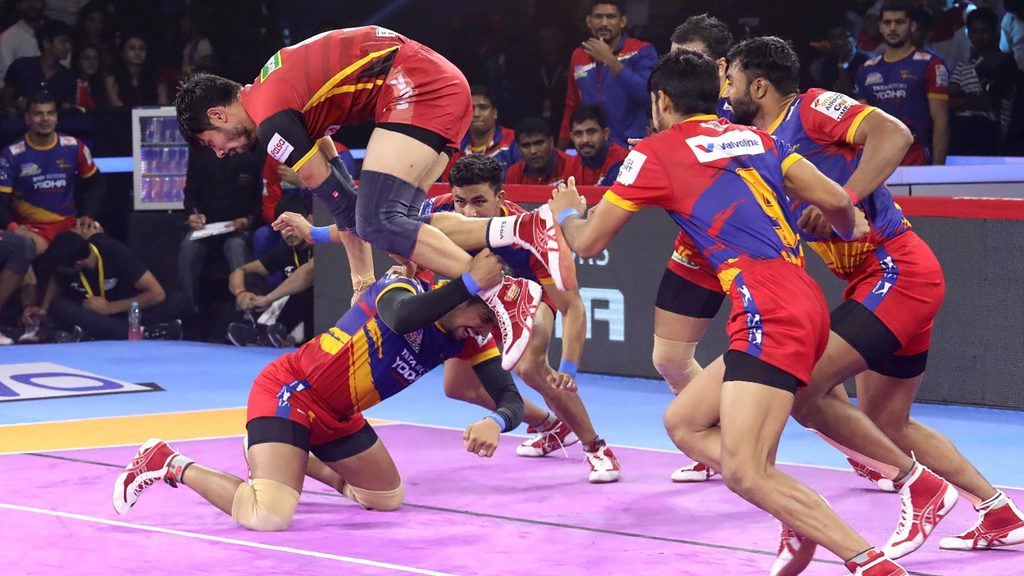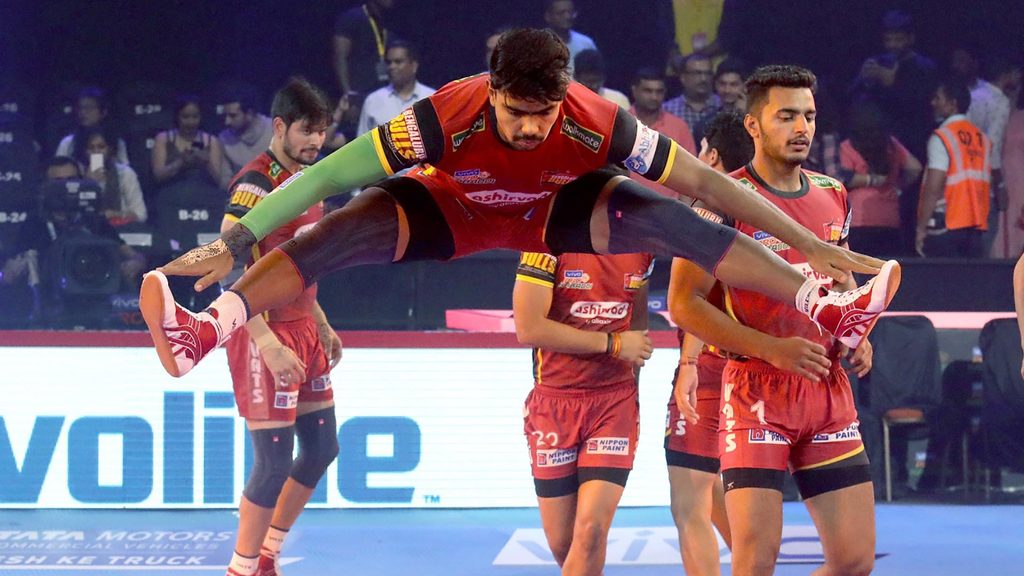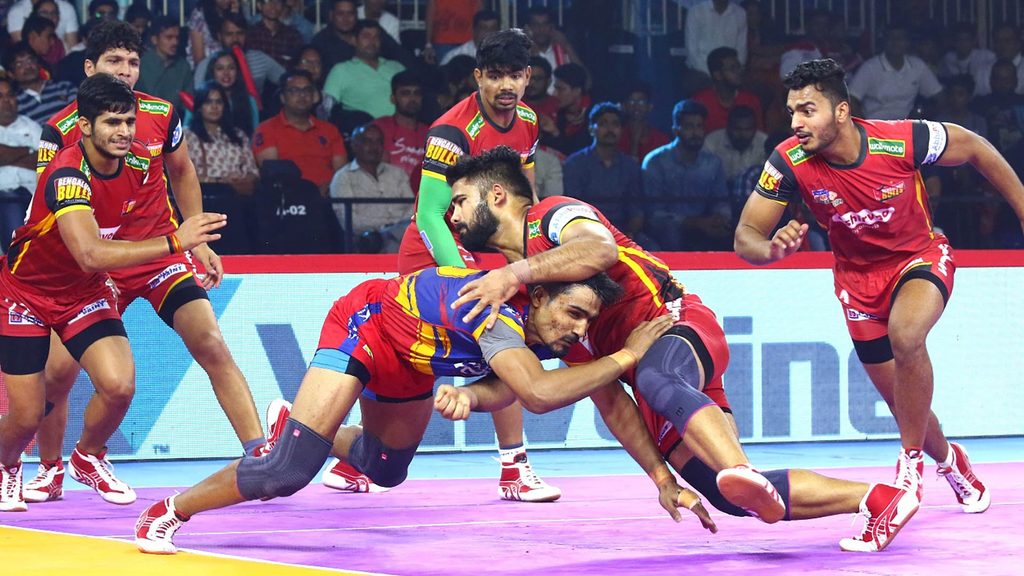Jump: A visually spectacular combination of agility and timing

One of the most aesthetically pleasing and mindboggling moves that a raider can attempt on the mat is the Jump. Engineered to evade a swarm of defenders baying to take down a raider via his lower body, the Jump has become an effective way to counter tacklers who rely heavily on moves like the Block and Thigh Hold. The advances in fitness and agility ever since the inception of VIVO Pro Kabaddi have now made the move far more commonplace.

Core strength, swift judgment and flexibility are just a few of the pre-requisites for anyone attempting this move. After all, anticipating the defender’s movements, adjusting your body shape and propelling yourself a few feet in the air is easier in theory than practice. Add to that, an onrushing chain of defenders coming at you with full force and it makes an already difficult situation even more challenging.
So how exactly can one master such a complex move? To find out, prokabaddi.com caught up with one of the best practitioners of the Jump, Pawan ‘Hi-Flyer’ Sehrawat who, as his moniker suggests, loves airtime. Needless to say, Season 6’s Most Valuable Player and leading points-scorer had some fascinating insight to share.
The Hi-Flyer’s aerial lessons
“It's important to have a strong core to execute the move properly. You need to exercise with the intent of strengthening your core,” Sehrawat said. “I used to use the Jump back in Season 3 as well, but not so much. Back then, I couldn't jump as high as I can now. I focused on strengthening my core and as you saw last season, I can extract a lot more height with my jumps now, making them all the more effective.”
While strengthening your core is a must to perform the Jump, it also boils down to the mental strength and strategic calculations one has to make, as Sehrawat explained.

“It's a hard move to execute and master, especially in matches. An unsuccessful attempt to pull off a Jump can dampen your confidence and a successful execution during the match can up your confidence significantly. Since it’s such a difficult manoeuvre to execute, once you have done that, players develop the belief that they can pull off other skills too,” he said.
“It's important to consider whether the defenders are coming at you in a chain, going for a solo tackle, or diving in to cut you off. If it’s a single defender (trying to block you in an upright position), Jump is a risky choice to make since there are chances of an injury. The success rate of the move goes up while faced with a chain and it is very useful when your opponent is diving in for a tackle. You need to preempt the manner of tackle coming at you,” Sehrawat added.
How to counteract the Jump?
While viewers enjoy the spectacle of a raider launching themselves off the ground and gliding through the air by towering over several players; it is safe to say that defenders experience the exact opposite emotion once the raider gets the better of them. Keeping that in mind, we caught up with Super Tackle specialist Mahender Singh and asked him how defenders can nullify the Jump.

“Whenever we Dash or attempt a Thigh Hold, the raider tries the Jump. We as defenders must stand our ground at that moment to tackle them. A defender shouldn’t go so low against a raider who can use the Jump, that it gives the raider a chance to jump over them,” Mahender said.
“(It’s important to) always maintain a little height and try to keep body contact with the raider. Whenever we tackle the raider head-on, they won’t be able to stop us. But if the raider is within our range and we do not give him space to turn, then he will attempt a Jump, which we must be wary of.”
Strength, agility, timing and positioning, as well as a keen reading of the defender’s mind, are all essential factors which must go right to make a Jump successful. This visual spectacle which lasts a few seconds, thus, does not betray the years of training on the mat and in the gym that go behind it.
Related tags:
Latest Updates
- © Pro Kabaddi
- Terms & Conditions
- Privacy Policy
- Cookie Policy
Powered by: Sportz Interactive
